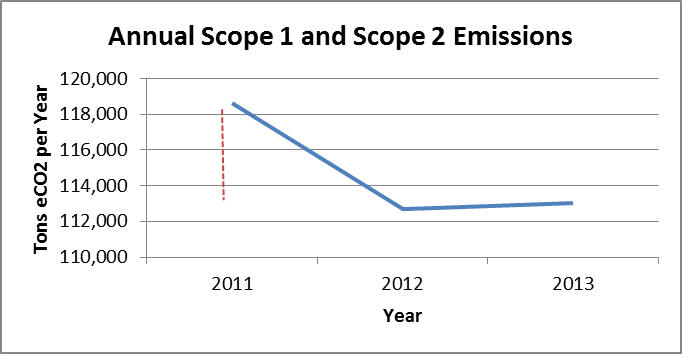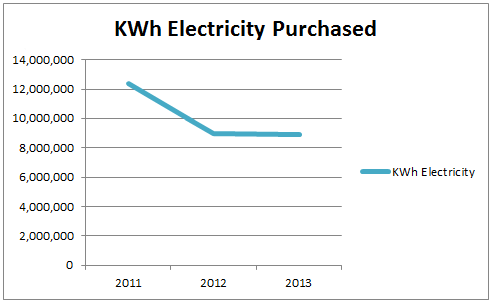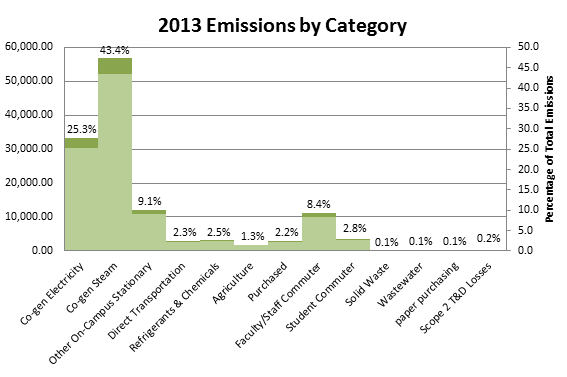Since Michael Hogan, UConn President at the time, signed the American College and University Presidents Climate Commitment promising that the university would aim for carbon neutrality by 2050, a lot of progress has been made. Retro-commissioning and re-lamping projects on many large buildings have been completed to reduce greenhouse gas emissions and produce immense energy savings. In addition the university also implemented an energy efficient fuel cell on the depot campus. With all these improvements, since 2011, UConn has reduced its primary CO2 emissions by 4,802 tons per year, which is roughly a 4% reduction.

Benchmarking our progress towards becoming a climate neutral university takes a very long time to complete because many departments and contacts must contribute their information. Once all this information was gathered, a slight increase in total emissions for 2013 was discovered. Although this statistic may throw UConn off a tiny bit on its path to climate neutrality, it can be learned from. Here are a few reasons for the 1% greenhouse gas increase:
Natural Gas Curtailment
- When the weather is especially cold and demand on the natural gas pipeline is high, UConn is forced to burn fuel oil instead of natural gas. On average, each day of natural gas curtailment results in 50,000 gallons of oil being consumed by the co-generation plant (an extra 500 tons eCO2 per day).
- >180,000 gallons of extra oil were burned on four days in 2013 due to natural gas curtailment (while no oil was burned in 2012)
- In January 2014, UConn was forced to curtail natural gas consumption for 10 days, resulting in >600,000 gallons of oil being burned

New Buildings
- New buildings and major additions have been added to the Storrs campus totaling nearly 400,000 square feet (Oak Hall, Laurel Hall, McMahon Dining Hall, Basketball Practice Facility, Bousfield and Storrs Hall additions) resulting in greater electricity consumption on campus

Refrigerants
- Emissions from the consumption of refrigerants have increased 7% each year since 2011
The sources of emissions in 2013 were primarily from on campus stationary sources. In fact, going back to 2001, there has never been a year where energy-related emissions did not contribute at least 75% of the total emissions until 2012. Stationary sources now account for 79% of emissions showing, rise from 73% last year. This is due to the increased energy demands from additional building space.
*It is important to note that composting on campus went from 1 tons in 2011 to 8 tons in 2013.This shows that composting initiatives are taking effect and we are reducing solid wastes which can contribute to some emissions.

UConn started to base-line total emissions tracking in 2007 in accordance with the ACUPCC. Overall, emissions since 2011 have decreased. Between 2011 and 2013, total emissions have dropped by 4.2% (4802 MT eCO2). This decline has occurred even as the number of full-time students has increased by almost 4% over the past 4 years. This has all occurred with an increase in building space due to the additions to Laurel Hall, Oak Hall, McMahon Dining Hall, the Basketball Practice Facility, Bousfield Hall, Storrs Hall among other buildings totaling around 400,000 square feet.
This decline in emissions contrary to growths in the student body and building space are positive indicators that UConn will continue to cut its climate footprint, even as it expands into a bigger and better institution in the years to come. With the Climate Action Plan leading the way, UConn can be seen as an innovator and leader in the realm of sustainability.